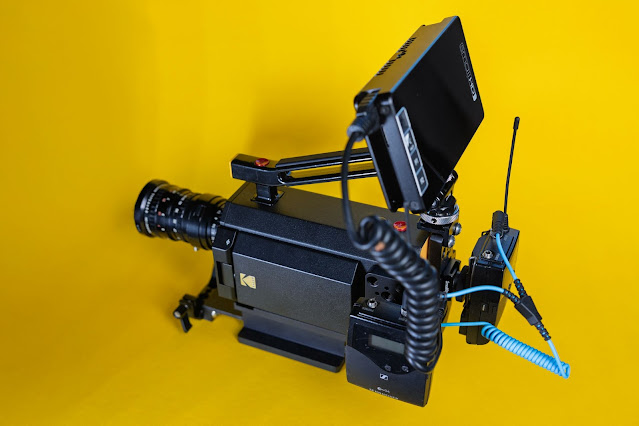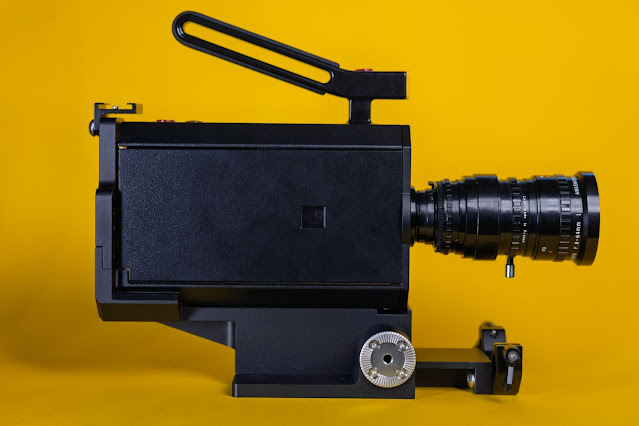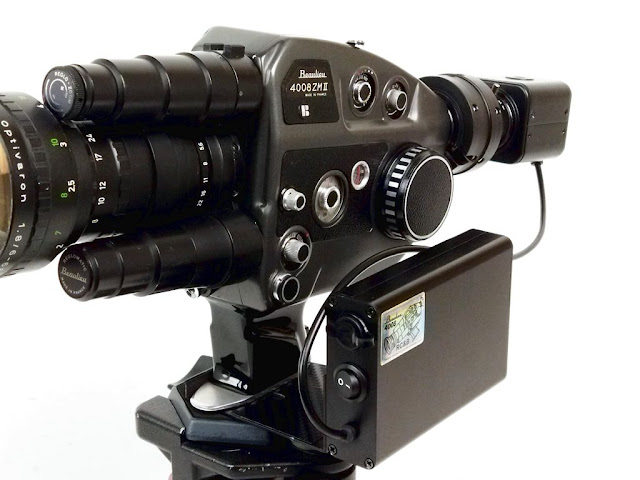For years, film archivists slept soundly under the comforting illusion of polyester. Immune to the dreaded vinegar syndrome that haunts cellulose triacetate, and free from the combustible terrors of nitrate, polyester became the miracle material — the stable base, the safe future, the chemical life raft for our most cherished images.
But what if polyester could die too? And what if it did so suddenly, silently — from the inside?
 |
| Degradation is slicing the polyester film cleanly |
THE DISCOVERY I DIDN’T WANT TO MAKE
While inspecting a 35mm trailer from 2008 — carefully stored, free from temperature swings, in an archive that never exceeds 21ºC even in the height of summer — I came across something unthinkable: a clean break running across the frame, from the center outward. As if a fault line had opened up in the very core of the base. As if something had detonated within the polyester, slicing it cleanly from within in a way no external handling could have caused.
And it wasn’t an isolated case. Checking other 35mm polyester trailers from between 2004 and 2014, I found similar internal crystallizations every few meters. Not on all reels — but on enough to raise an archivist’s blood pressure.
BUT WASN’T POLYESTER SUPPOSED TO LAST FOREVER?
Unlike triacetate, polyester is chemically stable. It shrugs off moisture, resists mold, and ignores hydrolysis. It was, we were told, the archival gold standard. But like all industrial miracles, it is only as strong as its manufacturing process. And in that critical decade — when Kodak was overwhelmed by demand, producing film fast enough to wrap the Earth 60 times annually — perhaps something slipped through: a missed annealing cycle, residual thermal stress, or a mechanical flaw during lamination.
Here's where material science enters the frame:
“Temperatures below the glass transition point (Tg) can lead to incomplete enthalpic relaxation, causing internal stress within the polymer.”
(From a polyester manufacturing patent, via patents.google.com)
Without that post-extrusion thermal treatment — known as annealing — the base may carry dormant tension. Calm, yes, but just one trigger away from catastrophic failure.
Archivist and film expert Jack Theakston suspects this trouble arises when moisture is trapped in a tight wind.
German archivist Peter Willems added: “Polyester is very sensitive to moisture. Unlike acetate, it tends to stick together more easily in my experience — probably because the non-emulsion side is very smooth. Such tears occur during unwinding. I’ve also had trailers that weren’t properly dried in the lab, and the same thing happened. I’ve seen this with 16mm film as well. At least, that’s been my observation.”
 |
| Degradation is slicing the polyester film cleanly |
A RESPONSE FROM KODAK
After reading this article, several Kodak engineers — including the director of the company — kindly reached out with their own insights:
“There is technical merit to what you’ve described, but this is not something that could have occurred in the Kodak ESTAR line because of the way the equipment works. The near mile-long ESTAR line is simply not capable of extrusion and annealing unless Tg is fully achieved.”
Kodak also clarified that their PET (polyester) manufacturing uses High Heat Set (HSS) processing, which boosts tensile strength both lengthwise and widthwise. While the thickness direction (Z axis) naturally has lower tensile strength, Kodak’s director noted that it would still require significant stress to fracture in the way I documented.
Another important point: the trailers examined may not have been Kodak stock. During the 2004–2012 period, trailers were often printed by various labs, and not all used Kodak material. So although the base bears physical similarities, the origin of the film remains uncertain.
What’s clear is that print film, regardless of the brand, was never designed for long-term archiving. Kodak´s director reminded us that labs at the time were running at breakneck speeds to meet demand. Film was being printed at up to 2,500 feet per minute, and processed at 1,000 feet per minute — conditions far removed from archival standards. That intense mechanical strain, coupled with high-speed chemical processing, may have compromised the film’s structural integrity from day one.
In contrast, intermediate and separation elements for film preservation made with the same polyester substrate — but handled and processed far more gently — exhibit no signs of this issue.
 |
| First stage of degradation in other segment of the trailer |
SO, WHAT SHOULD I DO NOW?
Document the evidence: year of printing, emulsion type, lab origin, batch code, and storage conditions.
Avoid projection: don’t risk damage to projectors, perforations, or your nerves.
Reach out: contact other archivists, distributors, or collectors to confirm if similar cases have emerged.
Alert: share your findings so they can verify if other similar cases exist.
Preserve the samples: photograph them, examine them microscopically, and, if possible, run a spectral analysis. This may well become a case study.
CONCLUSION (Provisional. But deeply troubling)
Polyester is not immortal. Or at least — not if it’s rushed through production and subjected to mechanical abuse.
The myth of its indestructibility now bears a crack. Ironically, right in the place that should be most secure: the center of the frame — where the image lives.
Kodak’s insights make clear that modern polyester, especially in archival formats, remains extremely robust. But print film — especially from a period of explosive global demand — carries its own risks.
And while we may not yet know the full scope of this issue, one thing is certain: in the archive world, vigilance is preservation. Not everything that shines is polyester. Sometimes, the enemy is silent, invisible — and hiding inside. Until the day it breaks.
 |
| Degradation in other trailer from the same period |



































